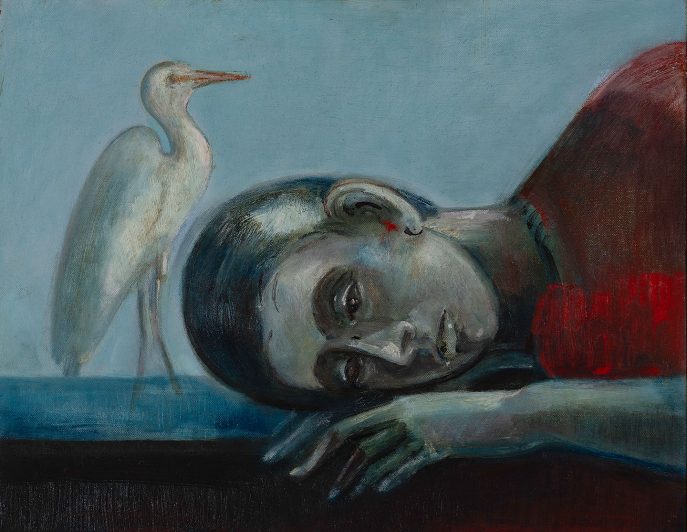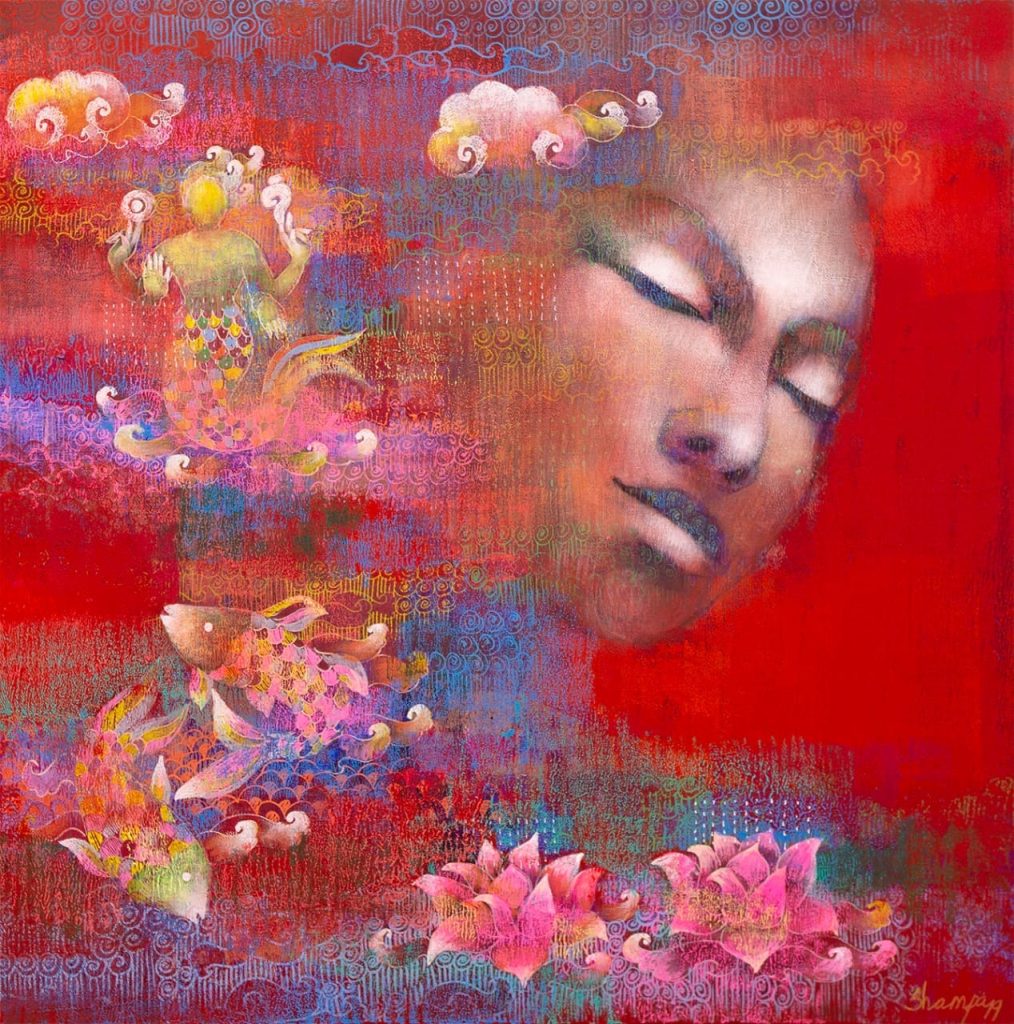What is being and what is not? What exists and what not? The unsolved inquiries of evaluating the true nature of reality, as a part of this physical world as a tangible and perceived entity or in a way that it is nothing but the mental projection of thoughts, has been pondered deeply and expressed in a mesmerizing way in a newly owned exhibition called “Arrivals and Departures”.
Vasudevan Akkitham exhibits his dream state reality in this show, creating dialectics of truth and asking broader questions about existence and our association. This work emerged from the daily experiences of consciousness that blended meticulously with the subconscious mind, resulting in an engaging conversation with the subject. The visual depiction of this series of works acts as a bridge to certain cerebral states. It offers an array of vivid realms that establish themselves so that an individual pondering about the existence of a non-being emerges out of his imagination and develops an understanding of the parallel universe and utopian worlds that go hand in hand but in a subtly coherent and correlated way.
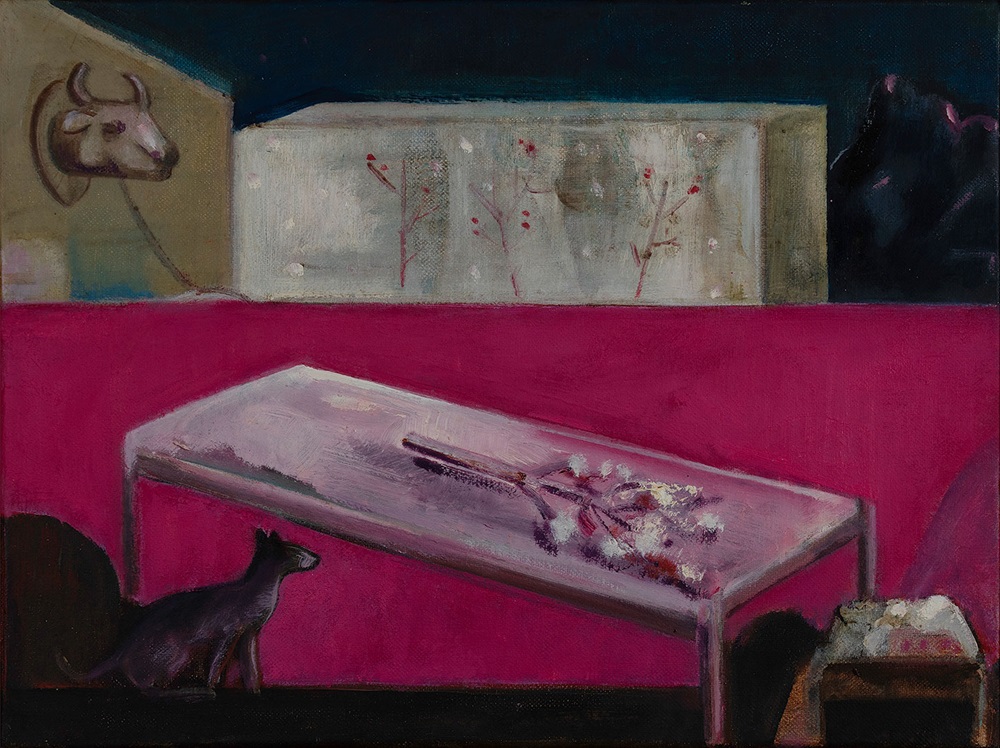
The pictorial plane of the works exhibits not only the profound, vulnerable, hidden truths of imagination but significantly delves into the surreal aspect of this physical world that is hidden under the physical phenomenon that appears to be true. I am highly intrigued by the use of shapes and symbols in his works; he uses elements like home, boy, ladder, elephant, sky, shop, girl, table, tree, etc. The captivating and thought-provoking portrayal of a human’s subtle stare creates an unmoved surface that appears to be in motion.
These works establish the requirements of gross exploration of the unexplored, which is nothing but the self, covered in the clouds of false belief of material truth. Akkitham develops dialogues through his figures, often motivating you to mull over the concerns related to the inability of the human mind to perceive what is not meant to be perceived. His work generates a sense of meaningful miseries that seems logical but creates the illusion of being an illogical statement of finding the figureless and shapeless. The fantasized expression of amalgamating psychological contexts with a philosophical quest that delves deeper into the metaphysical plane to understand and question the true notion of what we perceive in the physical world.
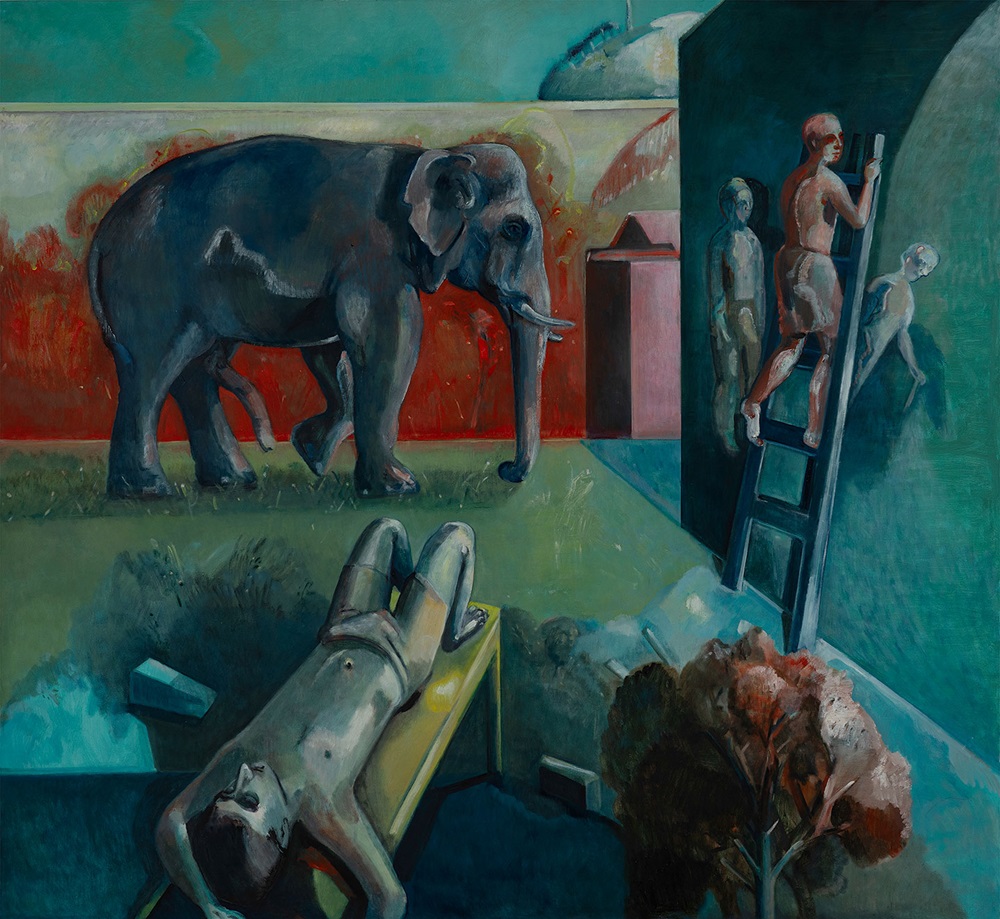
Symbols used by juxtapositions of pictorial elements give rise to highly personal narratives and challenge us to break pre-processing and evolve the diminished layers that lie in the substratum of mythological notions that take the driver’s seat while analyzing reality in its core. The artist intelligently breaks the traditional shackles and emerges as the contemporary take on the subtleties of the mind.
Vasudevan Akkitham painted in the two years since his retirement as head of the painting department at Baroda’s famed Faculty of Fine Arts, MSU. His work seems simple initially, but upon scrutinizing the core elements, including composition, colours, and the scale of figures that have been used, the work suddenly becomes an overflowing energy of mind that creates dramatically exposed theatrical exaggeration in visuals, which dissolves in the illusion of distorted lines and fragmented figures that reminds of a “dream of a dream within a dream”.
His journey of transformation, which changed him during his early and later years, comes out alive in his visuals and appears clearly in its plastic means. His work investigates the real meaning of existence within the existence of existence. Akkitham was born in Kumaranellur, a small village in Kerala’s verdant Palakkad district, and his depiction ideally represents the magical illusions or partial realities of his childhood. It is like a self-identification and jotting down of unheard echoes of the philosophy of being and non-being.
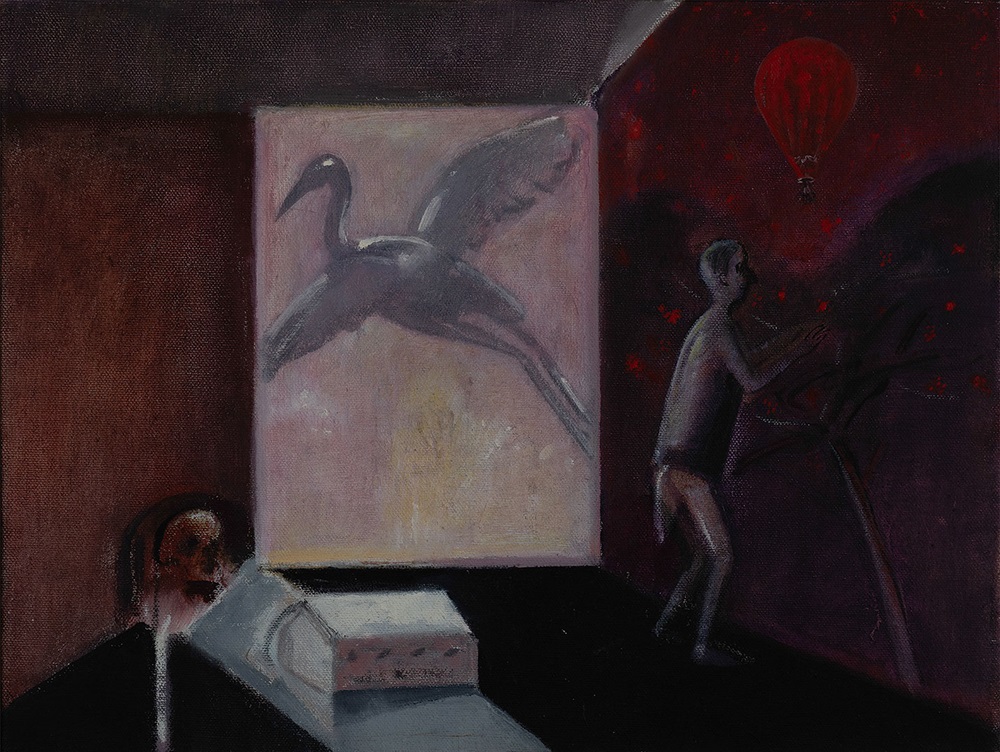
Kirtana Thangavelu’s views: “My work comes from my autobiographical details. I was born and raised in a village and came to the city. These aspects create a dichotomy and tension in my work that has always been there. It is like travelling back in time, departing from the world. Therefore, it has many philosophical aspects. I create many mental states in my works; though it might look descriptive, my approach is to create something that stays. Like a symbolic image that stays, or we carry with us.”
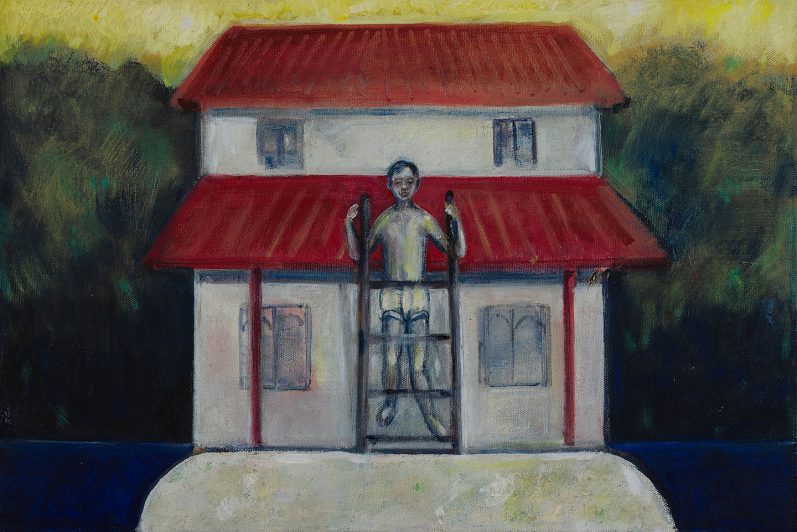
Arrival and Departures not only exhibit the deep Philosophy of life and death that determine the personal connection with the world of objects. It is not merely a sensory experience of understanding reality via tangible objects but also establishes an ever-lasting cerebral expertise that plays a vital role in building an individual’s character. I like how reality has been shattered in his works, and he ignites a sensible thought of whether the appeared world is exactly how it looks. His works are academic and highly detailed so that the composition of figures and faded colours emerge well with the narrative, lines could be more robust in his works, and the primary focus is on the dialogues with the self. There is unfinished business in the characters’ lives, as if the time has been frozen. I also find mazes of thoughts that announce liberation from the chained mind and present a verdict of liberty in the endless sky and water depth.
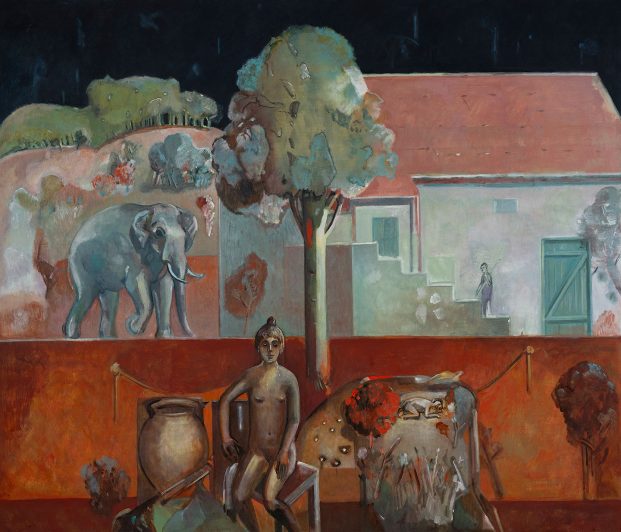
It is interesting to note here that it asks what remains ours. Our continuously moving life emits effects for which the causes are unknown, yet the interrogation through merging different landscapes and presenting one indicates the interconnectedness of thoughts. In a traditional approach, the work’s enrichment is noticeable in the foreground, middle ground, and background. Surrealism is the subconscious ‘Tabula Rasa’, which dissolves the conscious and plays intelligently with the amusement of wisdom. His works focus more on finding the epiphany within us and demand stability and serene association with our experiences. The show is on view till 25th February.
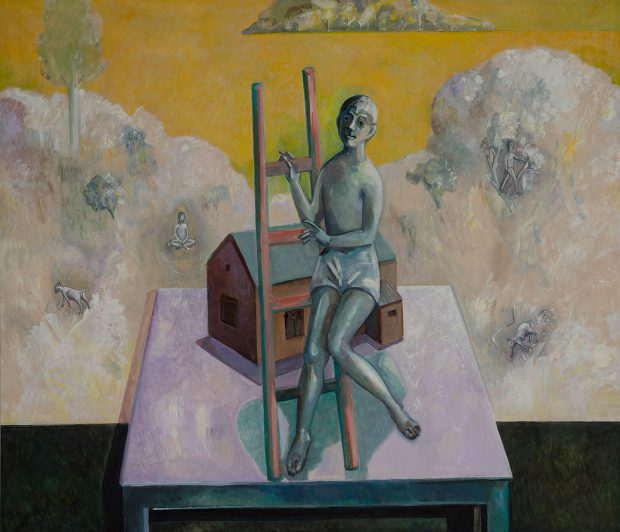

Contributor

